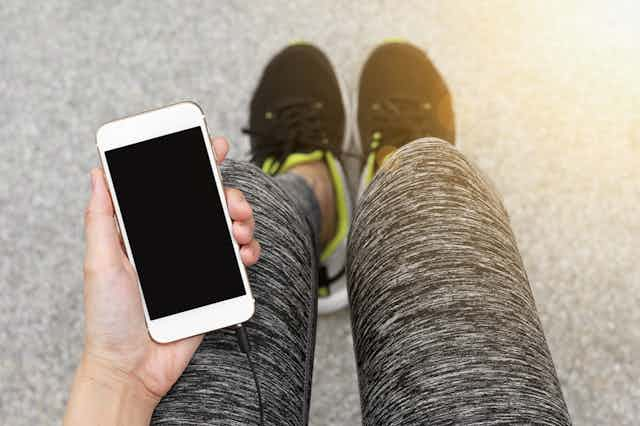At the touch of an app, Emma tracks her diabetes. She enters food, exercise, weight and blood sugar levels, then sets up medication reminders.
Suzanne uses the latest wearable device to track her running route and distances walked. As she has not slept too well in the past month, she also records her sleep patterns.
Richard takes his tablet for schizophrenia. The tablet contains a sensor that communicates with central health databases to tell health professionals if he has taken his medication.
The participatory health revolution
This is the participatory health revolution, where people use apps and wearable devices, and swallow sensors, to keep track of their health and well-being, to take control in the name of empowerment.
Latest figures indicate two in three Australians have a social media account and most spend almost the equivalent of one day a week online. In 2017, 90% of Australians will be online and by 2019 most households will have an average of 24 home devices (like alarms, phones, cars and computers) connected online.
Researchers say there are currently more than 160,000 medical and health apps; an estimated 485 million wearable devices are projected to be released a year by 2018.
All of this self-tracking and connectivity has implications for health care delivery. It is also changing how researchers collect and analyse data.
The public have now become the study subjects and the collection tools. People can also share this data in new ways.
Emma’s app data can be used during her health care consultations to guide her diabetes treatment and fill her medical records. So, Emma has become an active partner in how her health care is managed.
Emma could also join an online community to share this personal health information publicly. She can use new platforms to donate data for the public good.
The idea is that someone else like Emma, perhaps recently diagnosed with diabetes, or even diabetes researchers, will access this information and use it for the greater good. Yet, the implications of this data sharing have not received much attention.
Emerging risks
Emma chooses to upload her personal health information to one of these data sharing websites; she is in control and empowered. As the website promises anonymity, she thinks there’s little risk. But there are risks, some unintended.
Some researchers suggest publicly available datasets could be combined and analysed to identify negative behaviours linked with particular conditions. These negative behaviours may then be linked with particular social or cultural groups and increase the potential for stigmatisation.
The flow and movement of data is also creating more questions around consent and privacy. Many people remain unaware of where data is going and how it is then used. A recent draft report indicates 13% of Australians own a wearable device like the one Suzanne uses to track her running, walking and sleep.
How many people know the well-being and location data these wearable devices collect travels back to the companies that sell them and is used in ways we know little about?
How participatory is this?
A recent report paints a picture of Australians poised to embark on this revolution.
It found 87% of people would make appointments online, 74% would use home diagnostic kits for cholesterol, 70% would order prescriptions using a mobile app, 61% would consult with their doctor by video on their computer and 70% would communicate with a doctor or other health professional by email, text or social media.
But is this for everyone? Researchers argue many health and medical apps are mental health specific but few people use them. People are more likely to download a mental health app when a health professional recommends it rather than download it themselves.
Until now, most discussion has been on people’s capacity to use apps and wearable devices to promote their autonomy as truly empowered citizens.
But there is equal concern that new digital technologies may erode autonomy. One example is through the data movement to businesses without individual knowledge or consent.
Another example might be in Richard’s case of monitoring his use of schizophrenia medication, with its potential for greater surveillance and control, a form of digital paternalism.
Ethical guidance
Ethical guidance is needed to mitigate these emerging risks of participatory health. The unprecedented opportunities for public involvement in tracking and sharing data means we need to ensure participation is more than mere data generation and actually achieves true partnership and empowerment.
Research institutions will need to establish guidelines to determine the trustworthiness and legitimacy of publicly shared data. Research ethics committees and the research community will need to discuss where the boundaries lie between being a data subject and data collector.
We need to think about who owns data and how rights to use that data will be granted.
There also needs to be a better understanding of the impact of mental health apps and new technological sensor devices for people living with mental illness.

